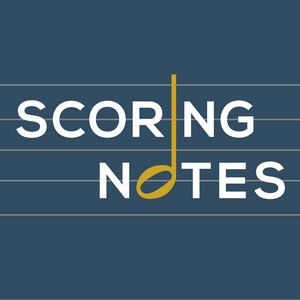Have you ever listened to an episode of the Scoring Notes podcast and wished you could ask a question directly on the show?
Two years ago, we opened up the phone lines directly, so to speak, and they were jam-packed! So much so, that we ended up devoting three episodes to answering those burning queries. You can find Part 1, Part 2, and Part 3 in the podcast archives.
Well, time and technology moves fast, so it’s time we do it again. Whether you’re a “long-timer” or a “first-timer”, all are welcome to ask a question about anything in the world of music notation software and related technology — or really, any one of the adjacent subjects we’ve covered on the Scoring Notes podcast or web site, and we may feature it an upcoming episode.
Just record your question as a voice memo and drop it directly here, or send it as an email attachment or as a file-sharing link to
[email protected]. We’d love it if you provide your name (first name only is OK), where in the world you’re calling from, and what music notation software you use — or if you don’t use it at all (yes, we have quite a few listeners in that camp).
If you’re shy, you can alternatively write your question in an email and send it to us.
Send us your question no later than Monday, July 14, 2025.
From the archive: How we don’t use music notation software (but do use related technology)
The rest of today’s episode is a classic one from March 2023, and perhaps it will spur some new questions.
Sometimes music notation software is perfect for the job, but other times, it’s the related technology that’s better suited to the task. Fortunately, we cover both sides of the equation on Scoring Notes — and it’s the latter part that Philip Rothman and David MacDonald discuss on this podcast episode.
When creating scores and parts, music notation software is clearly the choice. But what about front matter — the pages of text and sometimes other markings and symbols that preface the music? For that, better options may exist. We look at the pros and cons of making that material directly in music notation software, and suggest apps for when it’s helpful to split the job.
We talk about some of our favorite apps specifically for working with PDFs and the surprising number of ways that you can edit a file using those apps — and may need to do so — without actually having access to the music notation files or the software.
What about when you need to make music notation outside of notation software? For that, there is a whole suite of fonts designed to create music notation within non-music apps. They’re called MusFonts, and Dan Kreider created them to fill this niche.
For many users, creating audio is an essential component of music notation software, and we outline ways to complement the built-in process of making MIDI mockups with other software without getting too complicated.
Finally, we give a shout-out to our favorite piece of related technology.
More from Scoring Notes:
Export PDF to true black in Finale, and a macro for all parts
Fix printing problems with Sibelius, PDFs, and Acrobat
Quickly scale many PDFs with PDF-BatchScale
Make booklets and 2-ups with PDF-BatchBooklet
PDF-MusicBinder and PDF-BatchStitch utilities for music printing
File renaming and PDF batch utilities
MusGlyphs, an advanced music text font
MusGlyphs updated to 2.1; text version added
MusAnalysis, an advanced font for musical analysis
MusFrets, a font for chord diagrams
Introducing Ambitus, a new font for pitch incipits, scales, and range diagrams
Preparing teaching materials in music notation software
“Playing” with notation software, part 1 of 2
“Playing” with notation software, part 2 of 2
Apps and fonts we talk about:
Microsoft Word
Apple Pages
Affinity
Adobe Acrobat
PDF-BatchScale
PDF-BatchStitch
PDF-BatchBooklet
PDF-MusicBinder
PDF Squeezer
PDF Expert
MusGlyphs
MusAnalysis
MusFrets
Ambitus


